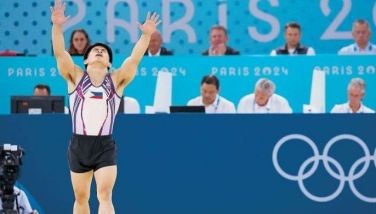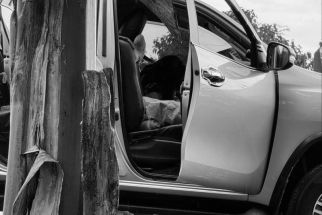Pinoys in Winter Games

Since the Winter Olympics’ debut in Chamonix, France, in 1924, the Philippines was represented only in three editions with alpine skiers Ben Nanasca and Juan Cipriano at the 1972 Sapporo Games, luger Raymond Ocampo at the 1988 Calgary Games and alpine skier Michael Teruel at the 1992 Albertville Games.
Only 16 Asian countries are participating in this year’s Winter Olympics in Vancouver. The Philippines is one of 39 Olympic Council of Asia nations skipping the 21st staging of the quadrennial event although a full-blooded Filipina, Amanda Evora, is competing in the pairs event of figure skating for the US.
There are 15 sports and 86 events listed in the Vancouver Games. The sports that have been in the calendar since Chamonix are cross-country skiing, figure skating, ice hockey, Nordic combined, ski-jumping and speed skating. The sports with at least 10 gold medals at stake are cross-country skiing and speed skating (12 each) and alpine skiing and biathlon (10 each).
Japan leads Asia in entering the most athletes with 95, followed by China’s 91. Hong Kong, Pakistan and Chinese-Taipei are represented by only one athlete each. The other Asian countries with competitors are India, Iran, the Democratic Republic of Korea, South Korea, Kazakhstan, Kyrgyzstan, Lebanon, Mongolia, Nepal, Tajikistan and Uzbekistan.
Nanasca was only 17 and Cipriano 20 when they showed up for the 1972 Sapporo Games. The cousins made history by becoming the first Filipinos ever to wear the national colors at the Winter Olympics. Neither, however, was impressive.
Cipriano was a major bust, failing to finish in both the giant slalom and slalom. Nanasca scratched out in the slalom but clocked 4:06.20 to place 42nd of 48 finishers with 25 others unable to cross the line in the grand slalom. Adding those who failed to finish, Nanasca ranked 42nd of 73, narrowly missing the upper half of the cut. Gold medalist Gustavo Thoeni of Italy was way ahead of the pack with a time of 3:09.62.
* * * *
Ocampo, a lawyer, took part in the luge event at the 1988 Games. He was 35 then and the chief litigator for a computer firm in Belmont, California. Ocampo later became senior vice president of Oracle and is more known as an expert in business and legal issues related to software and technology companies then as the Philippines’ first and only luger in Winter Olympic history.
Ocampo fared miserably in Calgary, placing 37th of 38 and beating only Albertu Carpentier Altiu Aho of the Netherlands Antilles.
Although a US resident for 25 years, Ocampo was registered as an athlete from the Philippines. He was after all born in the Philippines. A wire story reporting on Ocampo’s performance described him as “a human punchbag” for rebounding four times off the walls of the luge track. In one of his four runs, Ocampo’s sled smashed into a wall, breaking a runner and he looked badly shaken.
Then came Teruel who competed in alpine skiing in Albertville, France, in 1992. This was the last time that the Winter and Summer Olympics were held in the same year. In 1994, the Winter Olympics started its own quadrennial cycle in Lillehammer, Norway.
Teruel, then 22, didn’t do too badly, finishing in both slalom and giant slalom unlike Cipriano in 1972. He clocked 2:27.49 to place 49th of 65 finishers with 57 scratches in the slalom won by Finn Christian Jagge of Norway who timed in at 1:44.39. In the giant slalom, Teruel was 71st of 91 finishers with 40 scratches. He clocked 2:46.84 while gold medalist Alberto Tomba of Italy crossed the line at 2:06.98.
To warm up for the Olympics, Teruel competed at the World Championships in Vail, Colorado, in 1989 and the Asian Winter Games in Sapporo in 1990. He was 28th of 32 in Vail and 11th in the slalom and 15th in the giant slalom in Sapporo.
Donn Esmonde of The Buffalo News said Teruel “took advantage” of his Filipino parents being “naturalized American citizens native to the Philippines” to request competitor status from the Philippine Olympic Committee (POC) whose president then was Gov. Jose Sering. Although Teruel’s father Lorenzo admitted to the Wall Street Journal that his son was registered in the International Ski Federation as an American, he was allowed to represent the Philippines in Albertville because of his dual citizenship.
Teruel was born in New York before his parents became naturalized US citizens. His father Lorenzo left the Philippines to study medicine in the US and later married a Filipina, Teresita Nunez, in Connecticut. His mother also went to the US to pursue higher studies in chemistry.
The Fil-Am pair of Michael Dimalanta and Gracielle Jeanne Tan attempted to qualify for the Vancouver Games representing the Philippines but failed to make the grade. Another Fil-Am Eden Serina, 25, tried his luck in snowboarding and also didn’t qualify.
The Philippines hasn’t been able to capture a gold medal in the Summer Games since sprinter David Nepomuceno was the lone Filipino athlete in the country’s Olympic debut in 1924. So far, the Philippines has collected two silver and seven bronze medals in the Summer Olympics but none in the Winter Games.
- Latest
- Trending






























